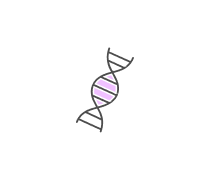This structure if usually the site of fertlization in humans:
The function of the acrosome in sperm is to
In embryonic development, a sphere of cells with a hollow center is...
The succession of rapid cell division that follows fertilization is...
The hormone...
The stage of embryonic development in which there are three layers of...
On a flower, the site where pollen grains attach during fertilization...
On a flower, the location of male gametophyte tissue is called the
On a flower, the site where pollen grains are produced is called the
On a flower, this structure protects the developing floral parts while...
During the process of development, it is essential for some cells to...
In animals, all of the following are associated with embryonic...
Which of the following best describes the cells that result from the...
Among amniotes, all of the following are extraembryonic membranes...
This hormone promotes the development of the endometrium.
In embryonic development, a solid ball of around 16-32 cells is called...
Flowering plants are capable of fertilization without water because
In the alternating life cycle found in plants, the two multicellular...
This hormone stimulates ovulation.
On a flower, the pollen tube extends the length of this structure to...
Double fertilization in an ovule of a flowering plant results in which...
All of the following correctly describe what happens to the embryonic...
Which of the following structures allows for increased seed dispersal...
The fruit produced by angiosperms is an adaptation that most often
Which of the following structures represents male gametophyte tissue?
Oogenesis in humans begins
This hormone stimulates the testes to produce androgens, such as...
Which of the following structures is produced from megaspores in...
Genetically-unique, haploid eggs develop into haploid individuals in
In humans, gastrulation begins at the
















